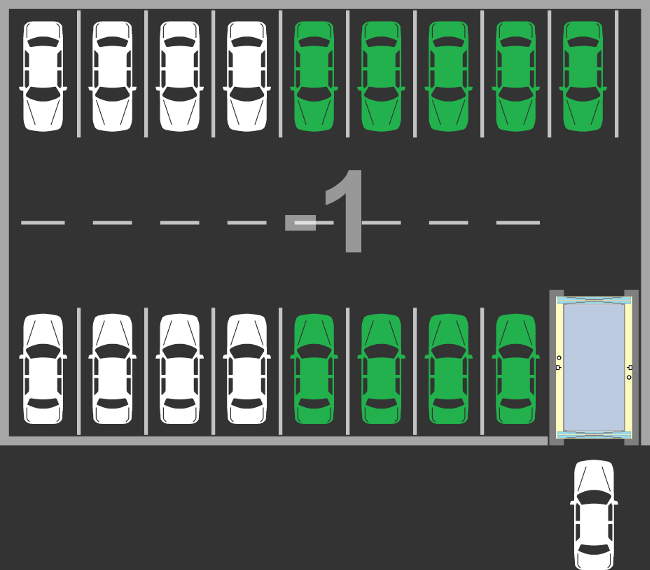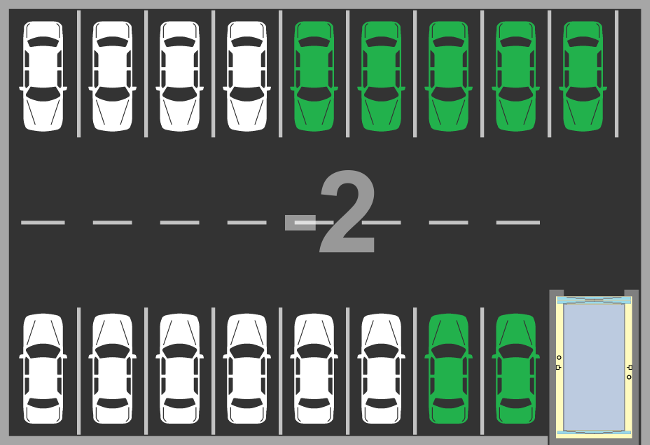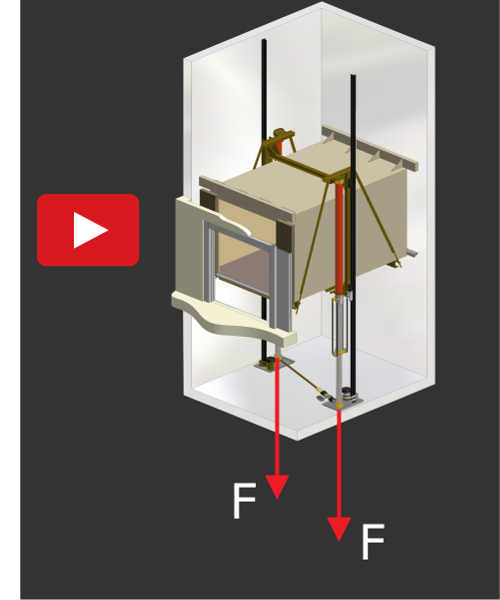 | VEHICLE LIFTS VL - CAR LIFTS
| VEHICLE LIFTS VL - CAR LIFTS
The most perfect lift devices to carry vehicles that have ever been invented *)

VL® vehicle lifts (car lifts)
- represent a version of the hydraulic goods-passenger lifts that are adapted for transportation of passenger cars. The lifts exist in three standard versions EC-Design Examination certified:- VL40 of 4.000 kg load and of the cabin dimensions of 2,8 x 6,0 m and a 2,6 m wide door
- VL35 of 3.500 kg load and of the cabin dimensions of 2,7 x 5,6 m and a 2,4 m wide door
- and
- VL30 of 3.000 kg load and the car dimensions of 2,4 x 5,3 m and a 2,3 m wide door.
GMV recommends VL35 and VL40, because these lifts provide transportation of all mass-produced passenger cars – including the biggest American SUVs.

Vehicle Lifts VL
® are made in the technique GMV 1:1 Technology – unique in the world direct drive 1:1, which keeps the cabin’s floor stable when entering the car. Moreover, the lift shafts are characterized by extremely small dimensions relative to the cabin size.The lifts serve multi-level over-ground and underground parking garages. The use of this lift in a small garage under the building, instead of a typical ramp, saves 5 up to 9 parking lots on one level. The following pictures explain the advantage.


(entrance on the lower floor)






Advantage in the form of additional parking lots and the future rent for their rental is evident.
The cost of one VL-lift and its shaft for two-level parking garage represents approx. 30-50% of value for a traditional concrete ramp.
Particular attention should be paid to the SUPER - VL® (S-VL®) of loads from 5.000 do 11.000 kg. The cabin has the following dimensions: width x depth 3,0 x 6,0 m and a door 2,8 m wide. The S-VL® lift provides transportation of heavy armored limousines and special-purpose vehicles.
H option for cars with roof box
GMV offers vehicle lifts in H option (VL30 H, VL35 H, VL40 H and S-VL H) with cabin and doors raised up to 2.5 m. So, it is possible to use an elevator with a roof box installed.


In that way, we meet the demands of users who prefer to install their boxes and pack them in garages than in front of the building, where often there is simply no place for it.
GENERAL REQUIREMENTS FOR GMV VEHICLE LIFTS
- Cabin of vehicle lift should be of sufficient size to accommodate a car and of sufficient width to let the passengers door open and leave the parked vehicle.
- The cabin should be equipped with 2 control panels placed on the opposite walls and available from the driver’s seat through opened window.
- Vehicle lift should be equipped with traffic lights located in front of shaft doors and in cabin for steering the movement of cars coming in and leaving.
- Vehicle lift must be equipped with emergency system which, in case of power failure (blackout), automatically directs cabin to a stop and fully opens doors to enable free leaving the cabin by a car.
- Cabin shall be equipped with clear information requesting switching the vehicle’s engine off before ordering lift travel.
- Distance between closed shaft doors and opposite wall or bulkhead in the building should not be lower than 8,5 meters.
Important parameter - force on the cabin’s sill Fs
The most unfavorable load on the VL lift’s construction occurs while a car is entering into the cabin. On the sill appears Fs. force. The cabin, carframe and T-guides should be strong enough to withstand coming forces and torques (Ts).

The vehicle lifts by GMV have been characterized by the following forces on the cabin’s sill Fs:
- VL40 Fs = 2400 kG
- VL35 Fs = 2100 kG
- VL30 Fs = 1800 kG
*) Great advantage over other technical solutions:
Technology and functionality
- The direct drive using a unique in the world technique GMV 1:1 Technology.
- Telescopic pistons type EC/TCS of GMV Sweden AB production with 100 percent synchronization impacting the lift operation and longevity (impossible to be reached by other solutions).
- High durability and reliability due to the small number of parts (including rotating ones).
- Low operating and maintenance cost.
- Simple and ultra light construction in comparison with other electric and hydraulic vehicle lifts.
- Exceptionally small size of the lift shaft with respect to the cabin’s dimensions.
- Minimum pit of 1,0 m.
- Exceptionally stable cabin’s floor position during vehicles entering – it is not possible to be achieved in case the lift car is mounted on ropes (hydraulic 1:2 and traction 4:1 vehicle lifts
 ).
).
- Standard load range from 3,0 up to 4,0 t and optional from 5 up to 11 t.
- Possibility of increasing capacity at constant cabin size.
- Central door enabling quick and safe vehicle entering.
Ecology
- Material-saving construction of the VL-lift, low total weight (even by 30-60% lower in comparison with other electric and hydraulic vehicle lifts), this means also lower energy consumption needed to manufacture and transport the lift.
WEIGHT COMPARISON OF LIFTS LEAVING THE FACTORY
( INCLUDING RANGE OF VEHICLE LIFTS Q = 3000 – 4000kg )Hp = 10 m, 4 stops

- A small number of parts of which the lift is built.
- Low demand for spare parts due to high durability and reliability.
- Light and material-saving shaft construction thanks to forces concentration on the shaft bottom.
- No drive with permanent magnets, the production of which is exceptionally energy-consuming and their utilization is difficult and expensive.
- Low energy consumption.
Safety
- More than 60 years of experience in hydraulic lifts construction.
- No massive units (no drive unit and counterweight) over the lift cabin.
- No ropes on which the lift cabin is mounted.
- Machinery room is located in a separate place what secures safe assembly and maintenance.
- Remote control of lift recalling.













 More about lifts
More about lifts
 VL VEHICLE LIFT .pdf
VL VEHICLE LIFT .pdf VL 4000 kg VEHICLE .pdf
VL 4000 kg VEHICLE .pdf TECH-CHARACTERISTICS VL 4000 kg VEHICLE .doc
TECH-CHARACTERISTICS VL 4000 kg VEHICLE .doc FORCES ACTING ON SHAFT VL 3000-4000 kg .pdf
FORCES ACTING ON SHAFT VL 3000-4000 kg .pdf VL 4000 kg VEHICLE .dwg
VL 4000 kg VEHICLE .dwg TECH-CHARACTERISTICS VL 4000 kg VEHICLE .dwg
TECH-CHARACTERISTICS VL 4000 kg VEHICLE .dwg FORCES ACTING ON SHAFT VL 3000-4000 kg .dwg
FORCES ACTING ON SHAFT VL 3000-4000 kg .dwg CONSTRUCTION GUIDELINES
CONSTRUCTION GUIDELINES TRACTION GUIDELINES
TRACTION GUIDELINES